The Arabic letter Seen (س) is one of the beautiful letters in the Arabic language. It is characterized by its smooth sound and distinct shape. The form of this letter changes depending on its position within a word, making it an essential step in mastering reading and writing. In this lesson, we will explore the different shapes of the letter Seen at the beginning, middle, and end of a word, supported by practical examples that help learners recognize and apply these variations accurately.
Practice on Writing the Forms and Positions of the Letter Seen
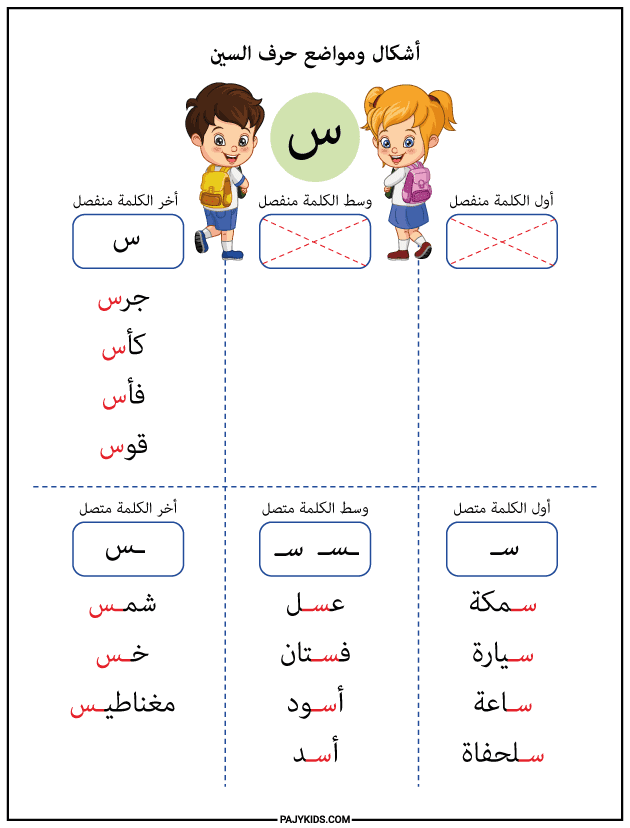
- The Shape of Seen at the Beginning of a Word
When Seen appears at the beginning of a word, it connects to the letter that follows and takes the form: سـ.
Examples: Samaa’ (سماء), Sikkeen (سكين), Sayyarah (سيارة).
This initial form is one of the basics children should be trained on, as it lays the foundation for recognizing the letter along with the appropriate vowel sounds.
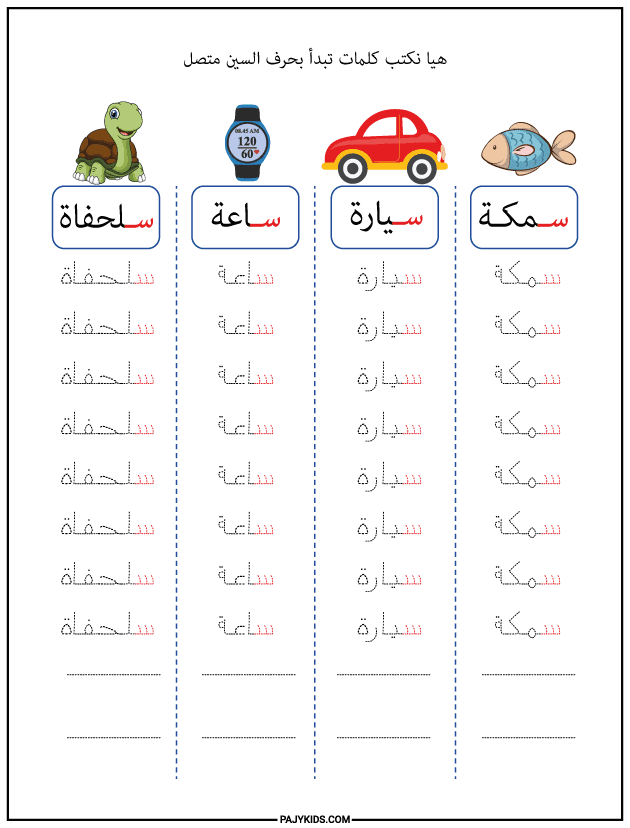
- The Shape of Seen in the Middle of a Word
When Seen comes in the middle of a word, it connects to both the preceding and the following letters, taking the form: ـسـ.
Examples: Asal (عسل), Fustan (فستان), Bisaat (بساط).
This position is among the most frequently used forms of the letter Seen, and requires regular practice to strengthen the learner’s ability to write and read it within context.
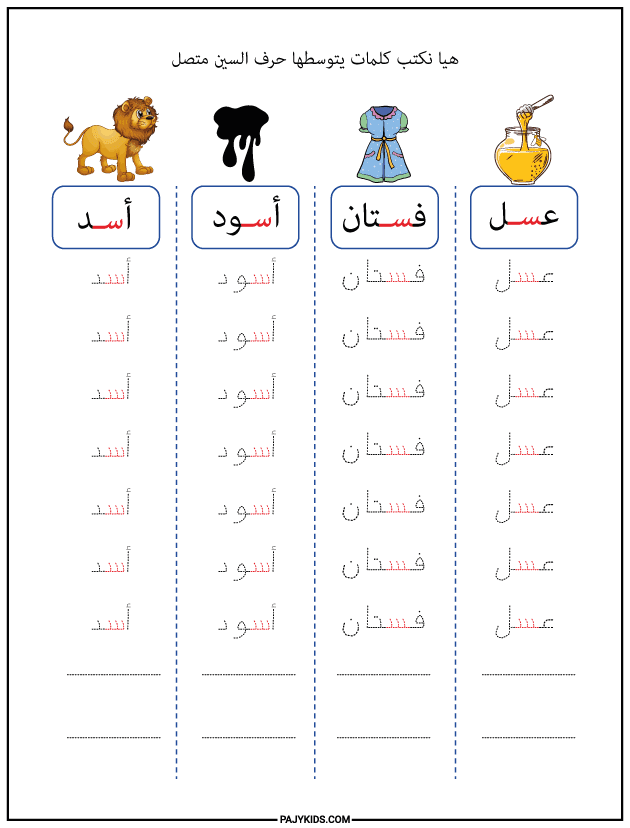
- The Shape of Seen at the End of a Word – Connected
When Seen comes at the end of a word and is connected to a preceding letter, it is written as: ـس.
Examples: Shams (شمس), Khas (خس), Magnatis (مغناطيس).
This form is very important for learning how words end, and it is one of the commonly used shapes of the letter Seen in both reading and writing.
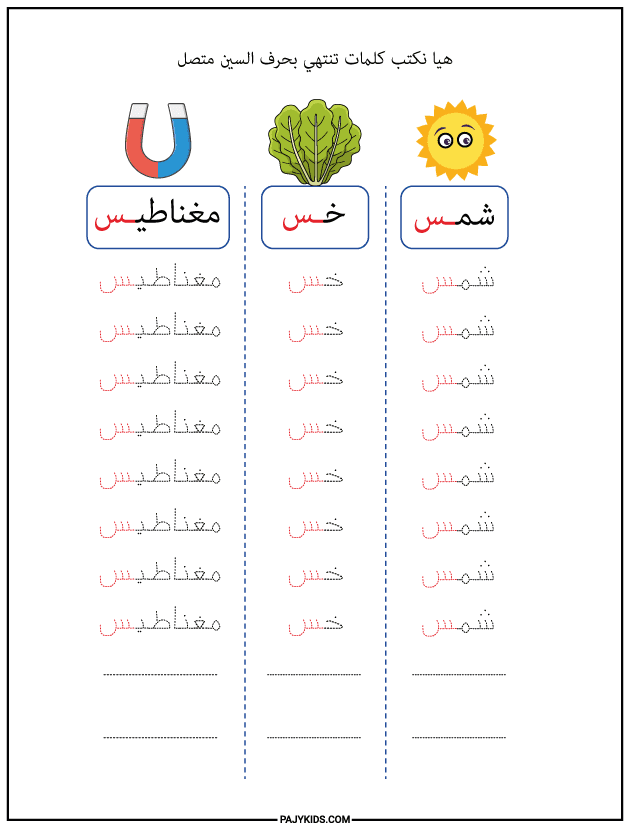
- The Shape of Seen at the End of a Word – Isolated
If Seen appears at the end of a word after a letter that does not connect to it, it is written in its isolated form: س.
Examples: Garas (جرس), Kaas (كأس), Qaws (قوس).
This shape closely resembles the initial form and is considered one of the easiest for children to recognize and repeat.
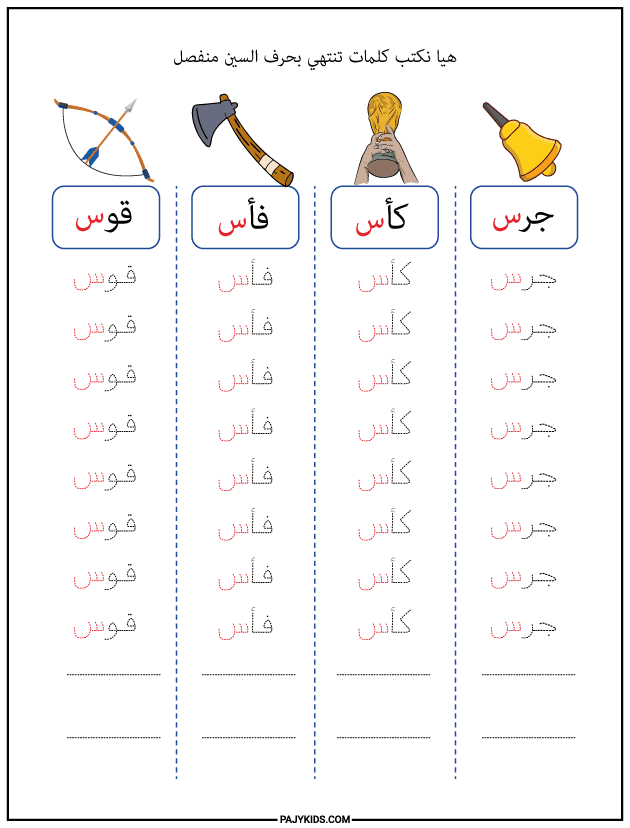
It is important for students to distinguish between Seen (س) and Sheen (ش), as they are similar in shape but differ in the number of dots. Focus should be placed on identifying the three dots in Sheen, and distinguishing between the two through writing and visual exercises. This helps learners confidently recognize the correct forms of Seen and avoid confusion.